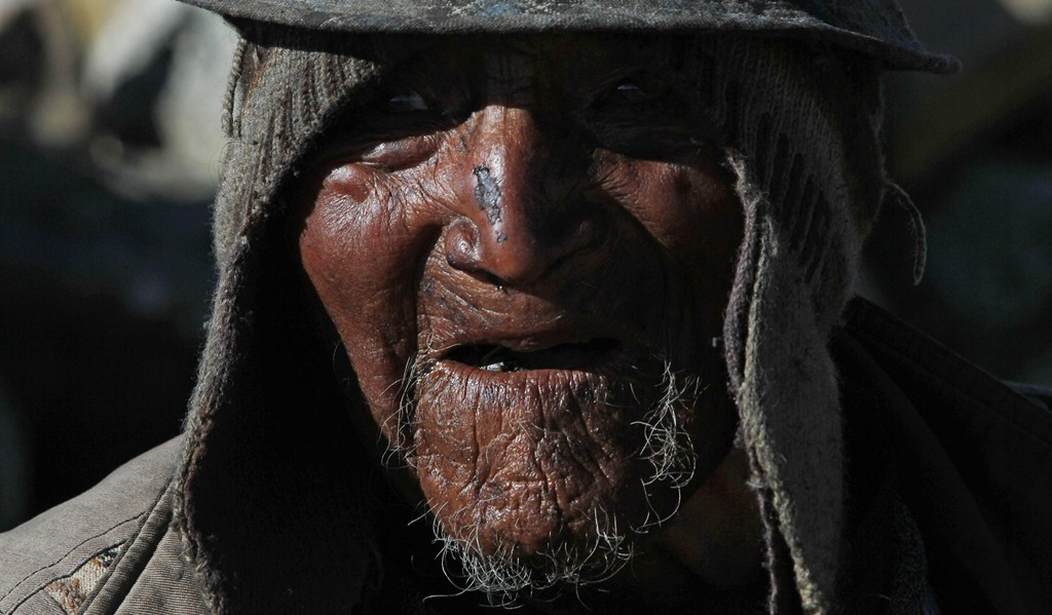The Social Security Act was passed in 1935 guaranteeing retirement pensions to all Americans over the age of 65. Sounds like a good deal… except for the fact that the average American life expectancy back in ’35 was 61.7 years.
FDR and his administration were as far-sighted as any politician in America, meaning not-at-all. Everything was supposed to remain the same so their plan would work perfectly—get the young and poor to pay for the federal pensions of the old and wealthy.
As time marched on, access to food and healthcare, as well as the automation of labor granted longevity to even to poorest in America. In 2010, the average lifespan was 78.7 years. The number of centenarians (people over 100 years old) in the US in ’10 was over 53,000.
Interestingly enough, there were more centenarians in 2010 then there were Social Security recipients in 1937, the first year benefits were distributed. Those first recipients received a total of $1.278 million in 1937. The Class of 2010 centenarians had received no less than $18 billion at the time of the ’10 census. That is $18 billion with a B.
There is absolutely no way that FDR thought social security would pay 53,364 people a monthly stipend for over 35 years. Less than 1% of the U.S. population was 65 or older in 1940, by 2011 that figure exceeded 18%. To give those percentages a number, 222,488 people in 1940 versus over 56 million in 2011.
The lifespan of the average American in 1935 was already unprecedented in the history of the world. In 1900, the average lifespan was 31 years, which was the norm for every advanced civilization at their peaks. Hobbes may have been describing the State of Nature when he said life was “…nasty, brutish, and short,” but it just as much describes life in civilization until the last half of the 20th Century.
Recommended
I know many of you are thinking, “Armstrong’s writing another Social Security is going to fail column. Ho hum.” But no, that point is obvious and has been written to death.
No institution could prepare itself for the unprecedented extension of life we have seen in the past 100 years. Humans were not designed to live as long as we have. Our longevity has not only fundamentally changed how our governments and institutions must deal with us, it has changed how we relate to others and ourselves.
Humans, like all creatures, are inherently selfish. We view the world narcissistically--our lives a movie starring us. When we help others, almost all do so not because it makes someone else feel good, but because it makes us feel good. Listen to testimonials of why people help others, “I feel… I want… I like… I, I, I.”
We delude ourselves into thinking we are good, moral, unselfish people, but we are lying to ourselves for the benefit of others. Longevity has put this selfishness on display for all but the blind to see.
Once upon a time, kids became adults once they hit puberty, if not earlier. By adults, I mean folks were thrust into positions of responsibility for themselves and their families. With no birth control, they had children younger and more of them: in the 1800s American women averaged 7-10 children. You needed those children though, because most families were farmers; more kids meant more hands during harvest.
With maybe 40 years to make a mark, individual timelines dilated. In the scientific community, this would be a “fast-paced life.” More time and energy is devoted to maturing quickly and having babies.
A short life meant death was more accepted and that our legacy was our children. The young were meant to take over for the old as generations passed. This allowed for a constant renewal of society as the vibrancy of youth was perpetually taking charge.
An 80-year life span means that we began to live “slow-paced lives.” Although our biological maturation (puberty) has not changed, our mental/social maturation has. Without the rush to become responsible and procreate, we can spend more time “finding ourselves.” The longer we spend as an autonomous unit free from responsibility to others and family, the more selfish we become and the harder it is to adapt once we get married and/or try have a family. Even though the internet makes us more connected, we have never been more alone or depressed.
Our 20s have become extended adolescence. Poisoning our young bodies with drugs, binge drinking, and non-stop sex has become right of passage. We burn out the dopamine stimuli of what was once “normal” and have to seek ever greater dangers and depravities while convincing ourselves that we have plenty of time to recover and start a family once we get into our 30s.
We start families later—mothers were generally 21 in 1900 and are close to 30. After being used to only looking out for ourselves, and far removed from out own childhood, we quickly grow bored and restless as family life sets in.
We break our children, competing with them instead of teaching them and babying them when they need discipline, because we know that we are not passing the world on to them anytime soon.
We break our marriages as we become tired of sleeping with the same person and listening to the same stories. Realizing that if we took our vows seriously, we have another 50 plus years with this person, we divorce in order to serve our base desires and needs. “What about the children?” Who cares? They will recover or deal with having a broken family like their parents did.
“It is my life, I am the star, and I can do anything I want!”
Even in the realm of healthcare, many of modern life’s health issues can be traced to increased longevity—diabetes, cancer, Alzheimer’s, heart disease, arthritis, blindness, deafness, etc. Our biological systems break down, yet with modern medicine we can fight through these setbacks and continue to thrive long after past the ages when our ancestors would have been dead and buried.
As such, life has become something to hold onto at all costs. Fighting death has become Mankind’s great struggle. 90% of healthcare expense is spent in the last 6 months of a person’s life. We cavalierly indebt our children in our vainglorious and futile struggle to hold onto our broken bodies and minds.
And our longevity is only bound to increase. Medical science already predicts that the first person to live 150 years has been born. Breakthroughs in genetics, medicine, and biotechnology means humanity will have even more time to show its inherently egotistical behavior.
Behold our future: fewer children born, more pressure to keep the status quo, and less willingness to make institutional changes that can insure the health of our republic and progeny. We the People will fall.
Believe me, unless we quickly come to terms with what our innate selfishness coupled with an ever-increasing lifespan means to society and family, the future I described will be our fate.

























Join the conversation as a VIP Member